Iceland is known for its stunning nature, and one of the most spectacular features of the country is its breathtaking waterfalls of all sizes and shapes that you won’t easily find in other European countries. While there's no official record, estimates say there may be as many as 10,000 waterfalls in Iceland. Over 200 of them have names, and a lot of them belong to the most visited waterfalls of Europe. Most people only visit the most famous waterfalls like Gulfoss, Seljalandsfoss, and Skogafoss. Still, in the southern part of Iceland, there are many beautiful waterfalls to enjoy. Here is my list of waterfalls worth including in your South Iceland road trip itinerary with stunning pictures. Check a map of 13 waterfalls included.
Gullfoss
Gullfoss is one of the main attractions in Iceland, and it gives the name to the Golden Circle because gull means golden in Icelandic. Gullfoss gets its name from the golden hue that often shines in its glacial waters. Another explanation is that the name is inspired by the rainbow you often see when the sun hits the water spray that is thrown up by the waterfall. When visiting the waterfall, find a statue of Sigridur (1871-1957) located on its grounds. She lived all her life in Brattholt, a nearby farm that still exists today, and she was the second eldest of 13 children in a farmer’s family. Upon speculations that Gullfoss was going to be rented to investors for generating electricity, she was not happy and took them to court. Fortunately, the investors failed to pay the rent, and the property was sold to the Icelandic Government in order to protect the stunning waterfall.
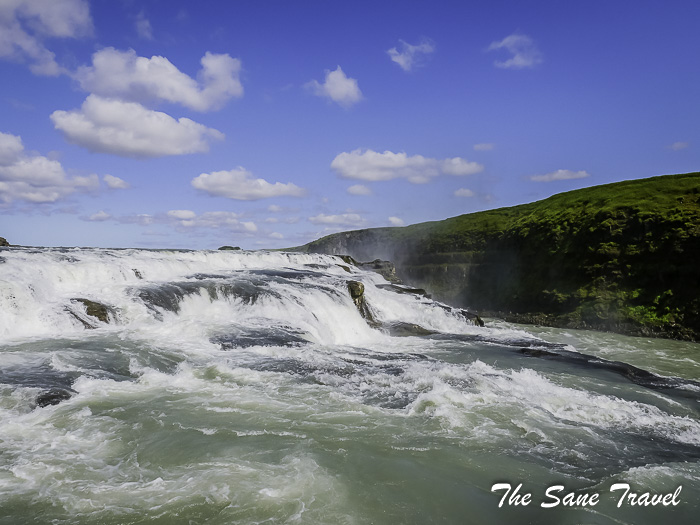

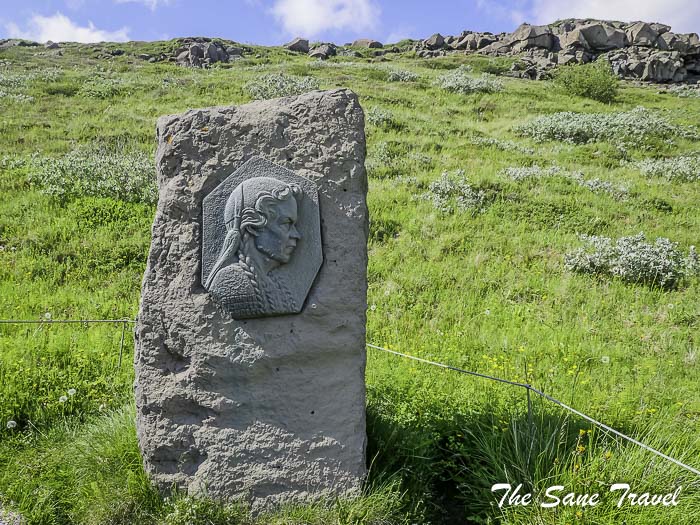 How to get there: Just put the name of the waterfall on Google maps, and it will lead you there. You can also visit it as a part of your Golden Circle tour.
How to get there: Just put the name of the waterfall on Google maps, and it will lead you there. You can also visit it as a part of your Golden Circle tour.
Faxi
The Faxi (or Vatnsleysufoss) waterfall is located on the Golden Circle. The waterfall is part of the Tungufljot River. It plunges down over 7 meters and is very impressive. The waterfall not necessarily impresses with its height rather than with almost 80 metres in width. It is full of salmon and is a popular spot for fishing. Faxi can be found around twelve kilometres from Geysir and Gullfoss and eight kilometres from Skalholt. The waterfall is easy to reach, and the parking is almost in front of the waterfall.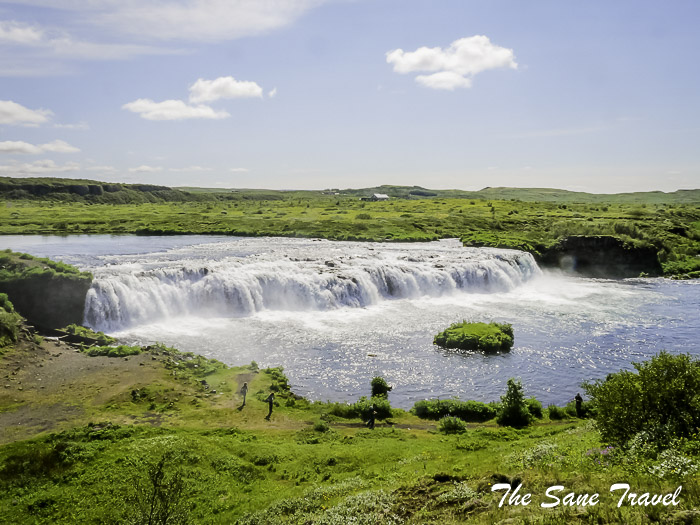

How to get there Just put the name of the waterfall on Google maps, and it will lead you there. This waterfall is closest to Reykjavik from all on my list. If you travel by car, you have to park the car in a paid parking lot before a waterfall.
Seljalandsfoss
Seljalandsfoss is one of the best-known waterfalls in Iceland. It is about 60 meters tall and is breathtakingly beautiful. It is a must to see Seljalandsfoss when visiting the south coast; you will not regret it! A path leads you behind the waterfall; just bring a raincoat. It is fantastic walking behind Seljalandsfoss, especially on a sunny day when one can catch a rainbow.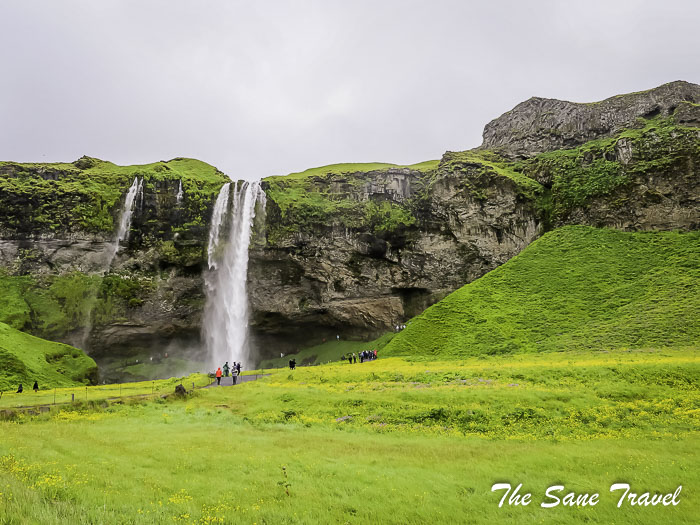

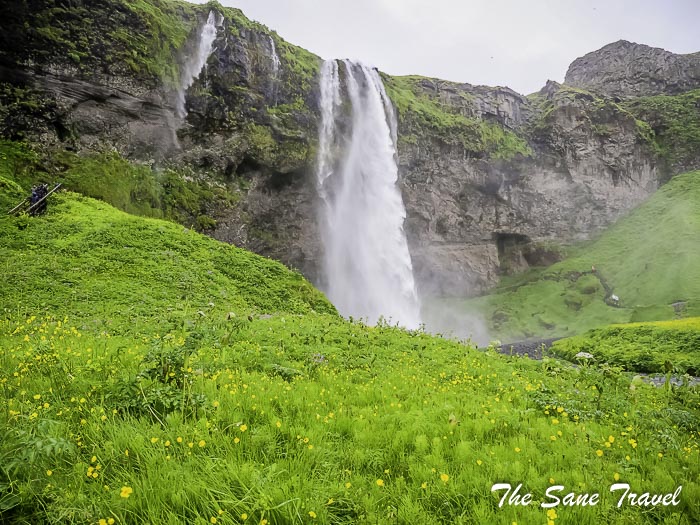 How to get there: Just put the name of the waterfall on Google maps, and it will lead you there. If you travel by rented car, you have to park the car in a paid parking lot before a waterfall.
How to get there: Just put the name of the waterfall on Google maps, and it will lead you there. If you travel by rented car, you have to park the car in a paid parking lot before a waterfall.
Gljufrabui
Gljufrabui or Gljufrafoss waterfall is one of Iceland’s hidden gems. Located just off the famous Ring Road, this natural wonder has managed to stay somewhat unknown. Gljúfrabúi waterfall is 40 meters (131ft) and runs from the Gljufura River. Gljufur is a gorge, a canyon, and “-bui” is an inhabitant. Roughly, it means “the inhabitant of the gorge.” This might sound a bit bizarre, but you’ll understand the name once you have visited it.
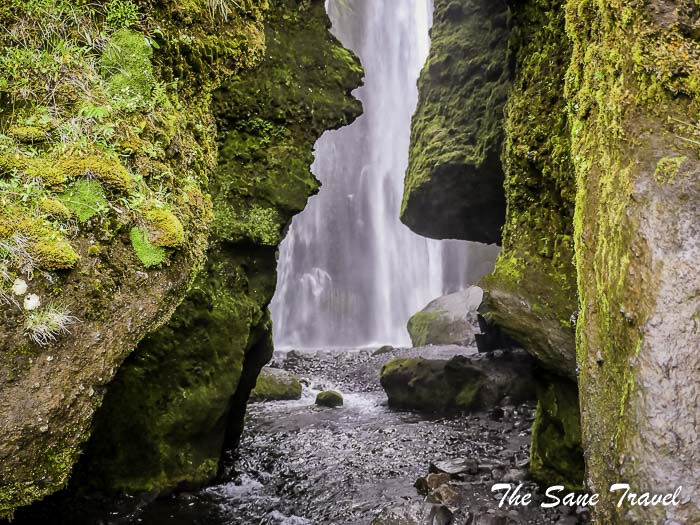
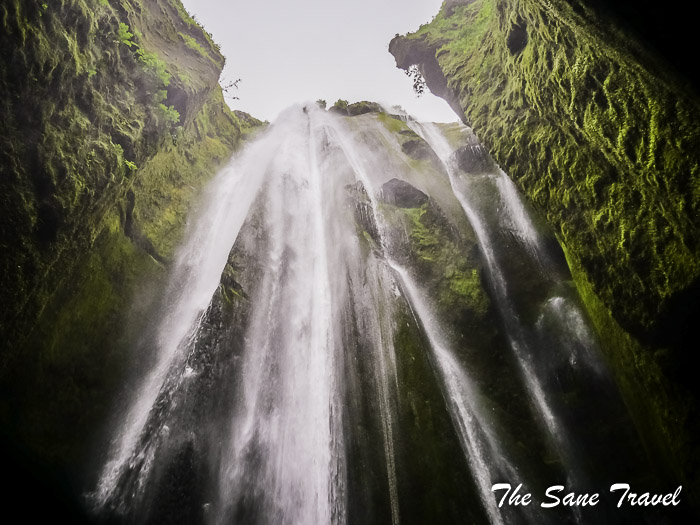
How to get there: It’s less than a kilometre away from Seljalandsfoss. You can walk or drive and park your car on the road. The entrance is through the grounds of the campsite at Hamragardar.
Skogafoss
Only a few kilometres away from the south shores of Iceland lies the village of Skogar next to the Ring Road. The greatest attraction of Skogar is the beautiful 60-metre high Skogafoss waterfall on the river Skoga. Legend has it that settler Thrasi has buried his chest of gold under the Skogafoss waterfall. When there is sunshine, you can see a vivid rainbow in front of the waterfall. The river below the falls holds a large salmon and char population, and fishermen are seen here fishing in summer. The path leading to the top of the waterfall gives you a different view of the waterfall.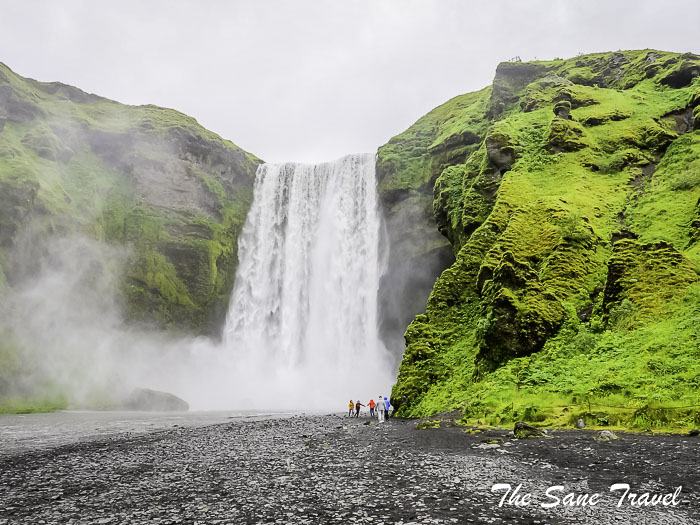


How to get there: It’s located next to the ring road. Just put the name of the waterfall on Google maps, and it will lead you there.
Hjalparfoss
Hjalparfoss is the place where the rivers Fossa and Thjorsa meet. Both of these are renowned as one of Iceland’s best fishing rivers, while Thjorsa also has the title of being the country’s longest. These two rivers fall from a lava field at about a 45 degree angle from each other, and their cascades merge into a serene pool. The water that flows from Hjalparfoss feeds the country’s second largest hydroelectric dam, which sits just a little downstream. The surrounding area is called Hjalp (Help) because the travellers across the Sprengisandur Route once found great help in reaching a vegetated area to feed their horses after a long journey.
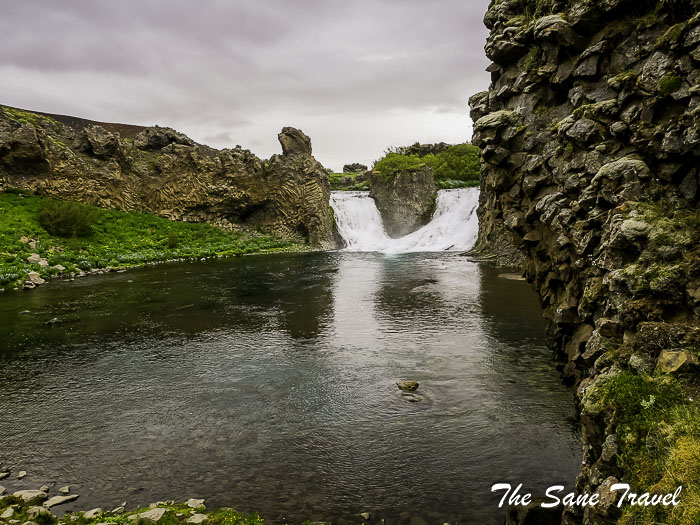 How to get there: Turn left from Selfoss if you are going from Reykjavik, and Google maps will easily lead you to the Hjalparfoss parking lot.
How to get there: Turn left from Selfoss if you are going from Reykjavik, and Google maps will easily lead you to the Hjalparfoss parking lot.
Gjain
Gjain is a stunning gorge with lush vegetation in Thjorsardalur in the South of Iceland, not far from the Hjalparfoss. Gjain means rift and is a valley with several breathtaking waterfalls. It is like an oasis with abundant spring-fed water, small springs, beautiful vegetation, impressive rock formation, cliffs, small waterfalls, and more. It is a beautiful place for photography. Gjain was a filming location in Game of Thrones.
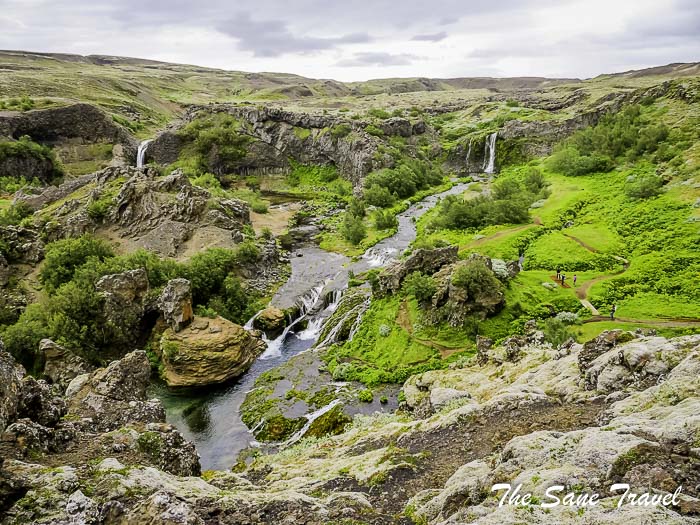
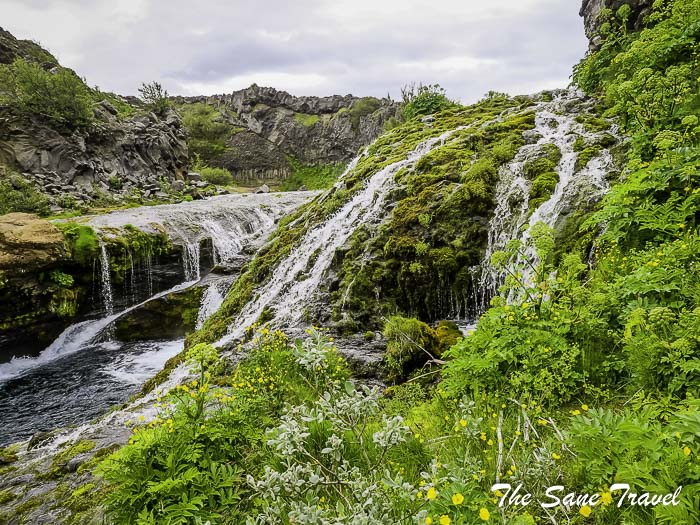

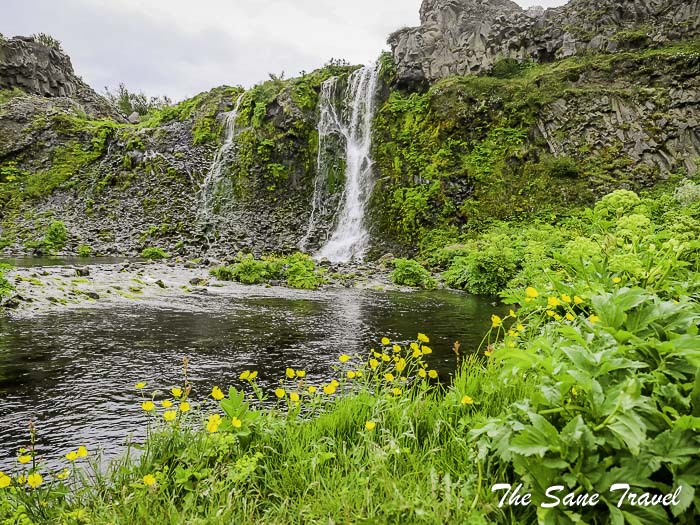
How to get there: Gjain is located a bit more than 8 kilometres from Hjalparfoss, mostly on a dirt road. The last kilometre is not suitable for 2WD, so if you have that kind of vehicle, you will have to walk this part of the road. Definitely worth doing!
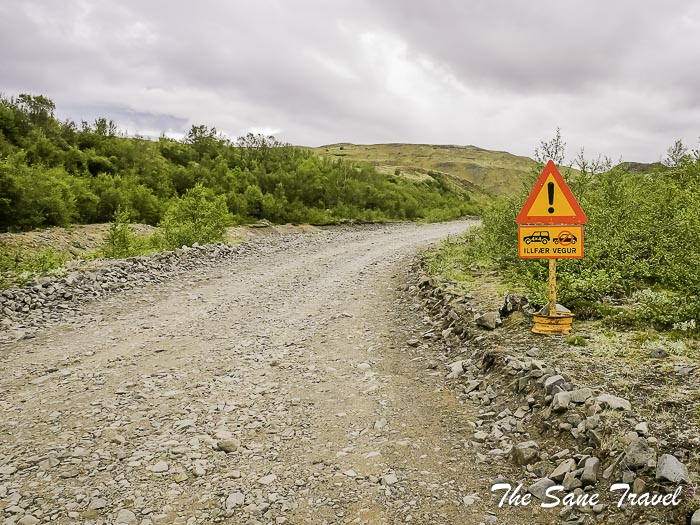
Haifoss
Haifoss i Fossa (mostly called Haifoss) has a single water drop of 122 meters. Haifoss is situated in the South of Iceland, not far from the Volcano Hekla. From the viewpoint there, you can also see another impressive waterfall called Granni.

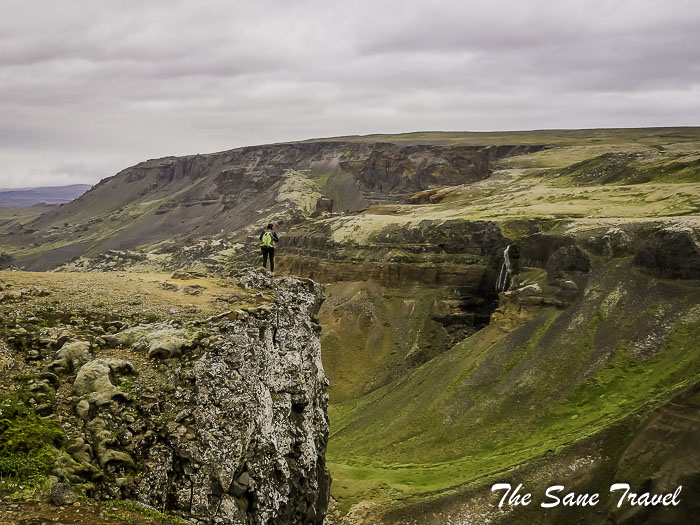
Granni
Granni is a waterfall next to Haifoss. It plunges from a high plateau into a massive canyon to meet the valley of the Thjorsa. Granni is Icelandic for "neighbour", referring to the falls next to neighbouring Háifoss. The river actually splits into two channels less than a kilometre upstream from the falls. The larger volume channel creates Háifoss, while the smaller volume channel forms a Granni waterfall. Unlike Háifoss, Granni cascades over a series of a stepped ledge for 26 metres (86 feet), then turns sharply to the left and drops 100 metres (331-feet) into the canyon proper.
 During the spring and early summer months, when the snow is melting, both falls swell to impressive volumes and create a roar echoing throughout the canyon.
During the spring and early summer months, when the snow is melting, both falls swell to impressive volumes and create a roar echoing throughout the canyon.
How to get to Haifoss and Granni: It’s about 20 kilometres from Hjalparfoss. If you have a 2WD car, better come back to road 32 from Gjain if you did it before and then turn left to road 332 to Haifoss. It is bumpy but doable.
Foss a Sidu
When driving on ring road one, you can’t miss this photogenic waterfall. A white stripe of water falling down can already be seen from a far distance. The river Fossa drops down over a basalt cliff and ends 30 meters lower before it continues its way to the Atlantic Ocean. It’s maybe not the biggest waterfall in Iceland, but certainly one of the most stunning. The small vertical, the shape, and the foreground with its green colours make Foss a Sidu one of the finest waterfalls to photograph.
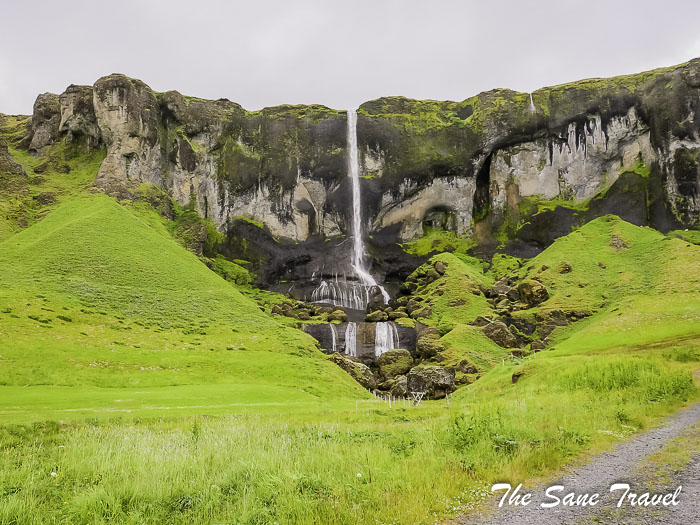 There is no official parking, but there are enough spots to park your car for a short while so you can take your pictures. Opposite the falls, you will find Dverghamrar (‘Dwarf Rocks’) with basalt columns, thought to be the dwelling place of some of Iceland’s ‘hidden people’.
There is no official parking, but there are enough spots to park your car for a short while so you can take your pictures. Opposite the falls, you will find Dverghamrar (‘Dwarf Rocks’) with basalt columns, thought to be the dwelling place of some of Iceland’s ‘hidden people’.
How to get there: It’s located next to ring road number one.
Fossalar or Foss midway li la lo
The Fossalar River and the lesser known waterfall on it are located in the Southern part of Iceland. Fossalar Waterfall is a perfect stop to capture authentic Icelandic beauty. The dramatic and graceful cascade with spectacular geological formations adds greatly to the surrounding area. You will surely be mesmerised by the water cascades as some of them gently falls while others tumble and babble down from the cliffs.
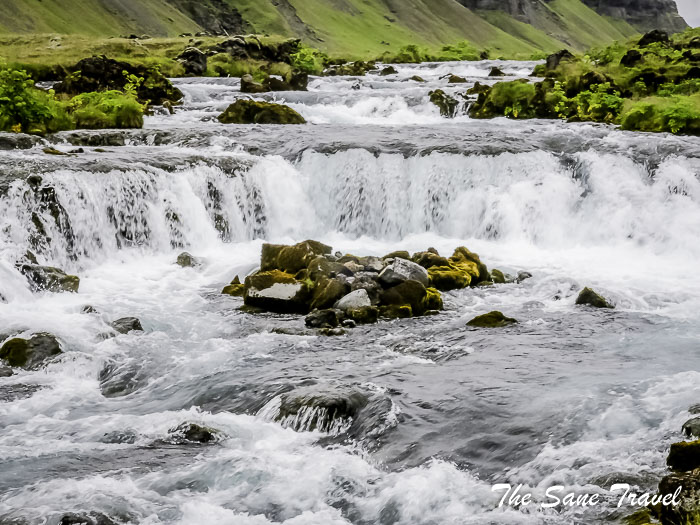

How to get there: It’s located next to ring road number one on your way to Glacier Lagoon.
Raudarfoss
Raudarfoss is an amazing waterfall in the south of Iceland, located 3 kilometres west of Kirkjubæjarklaustur along the road number one. Rauðárfoss means waterfall in the red river. The colour of the red water comes from the soil in the river. It’s 20 meters high and has the shape of a bridal veil.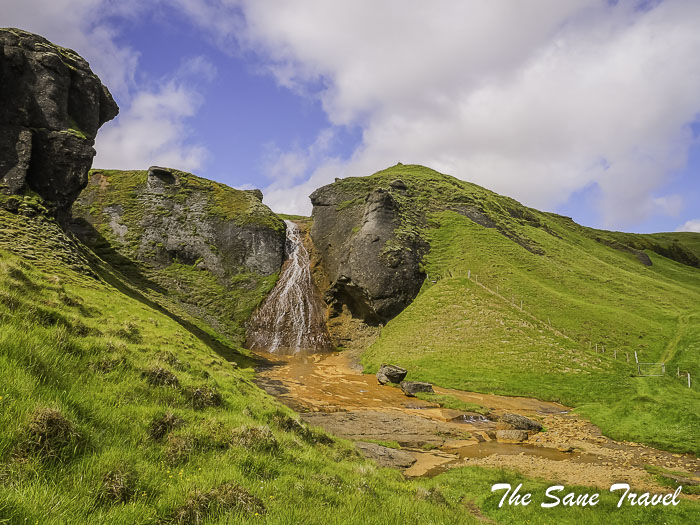

How to get there: You have to go by car almost 3 kilometres from N1 Skaftárskáli og Gvendarhorn gas station and do the last bit to the waterfall on foot.
Mogafoss
Fjardarargljufur is the name of a canyon in the Southeast of Iceland, not far from Kirkjubæjarklaustur. The beautiful 40 metres high Mogafoss is located there. Besides the waterfall, the stunning canyon itself is also worth to be visited. It is up to 100 meters deep and 2 kilometres long.
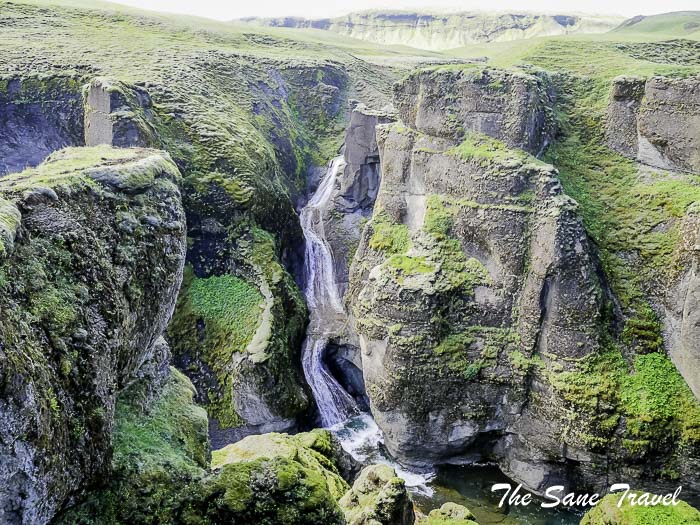
How to get there: Fjardarargljufur is not far from ring road one and the dust road to it is in good condition. Google maps will lead you there. Once there, you can park the car and walk along the canyon all the way to the top.
Check the map of all 13 waterfalls and add them to your South Iceland trip itinerary!
Like it? Pin it!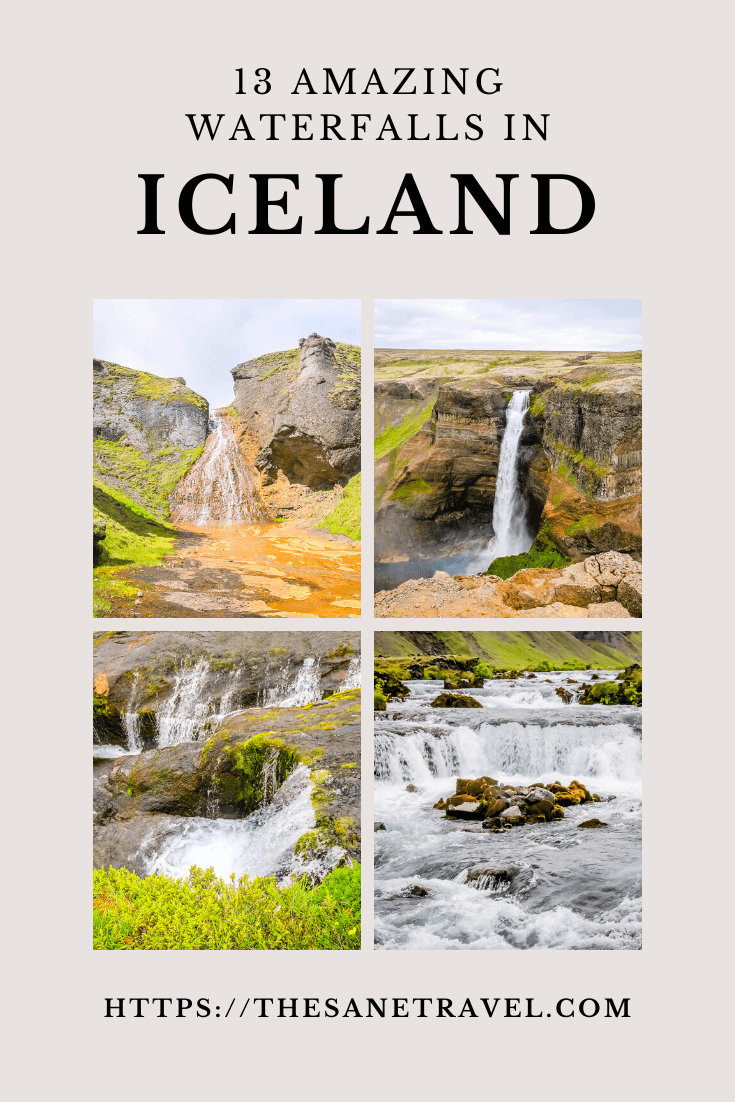
What did you think? Have you visited Iceland? If yes, how many of these 13 waterfalls have you visited? I’d love to hear from you so please add your comments below.
- Posted by Anita on September 17, 2021
Author: Anita Sāne
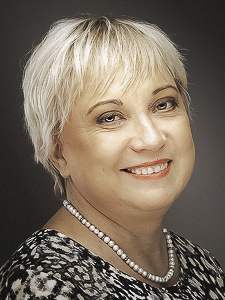
About the author
Anita is a part-time traveller, passionate photographer and a retired career woman from Latvia, travelling mostly solo for more than 15 years. She is a skilled travel planner who plans and executes her travels by herself. Anita wants to show you how to travel the world and open your mind to new experiences. Follow her on Facebook, Instagram, Pinterest, Twitter and Bloglovin.

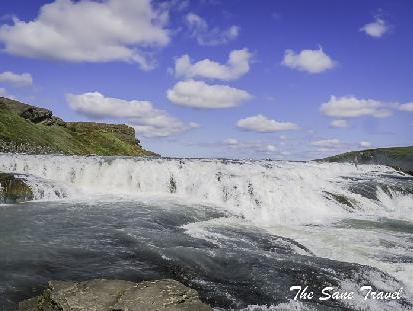
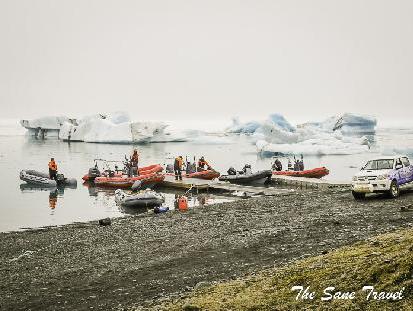
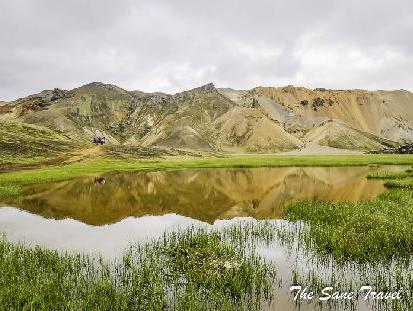
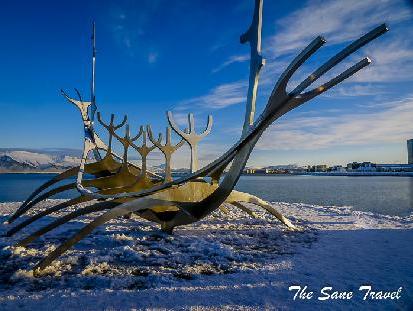


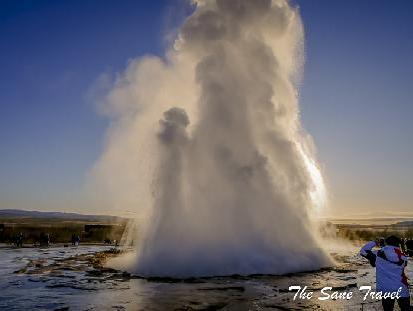


Thank you for the inspiration
Report
My comments